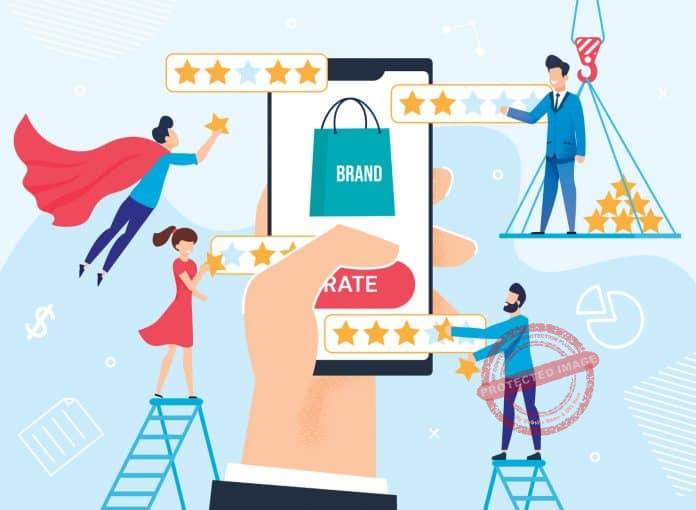How do you measure customer experience?
What does customer experience entail?
Why is it such an important concept in business?
Likewise, how can businesses measure customer experience with their products/services and improve it?
All the aforementioned, among other things, are what we will discuss in this article.
Business involves buying and selling or exchange of something for another.
However, to customers, the perception is different.
It is more like a journey from the moment they begin to communicate or interact with a business before purchasing.
Also, it involves the moments during and after purchasing the goods or services from the business.
In essence, the entire journey sums up what is known as the customer experience.
This also means that a business, brand, or company might have one of the best products and services but cannot give its customer a good experience.
Therefore, we’ll be considering how to know if you’re offering a good or bad customer experience as a business owner.
How to Measure Customer Experience -What is Customer Experience?
According to the Oxford Lexico Dictionary, an experience is an event or occurrence which leaves an impression on someone.
Hence, a customer experience known as CX is the series of events in your customer’s journey with your business.
Such experience leaves an impression on your customer or forms your customers’ perception of your business.
How To Measure Customer Experience – Elements That Contribute To Customer Experience
As we earlier established, customer experience is beyond a business or company’s ability to provide its customers with quality goods and services.
Research by businesses and companies on their customers revealed the following as the important elements of customer experiences.
These elements include;
- The level of consistency across all business areas; branding, costing, services, omnichannel, etc.
- The quality of customer service and customer service support team.
- The availability of information to customers.
- Effective and quick services and solutions.
- The level of personalization in customer interaction.
- Seamless interaction between customer and business.
- Understanding customer’s perceptions and needs.
- Transparency between the business and customers.
How to Measure Customer Experience – Importance of Customer Experience
Mahatma Gandhi states the following describing who and what a customer is to a business, and it goes thus;
“A customer is the most important visitor on our premises; he is not dependent on us.
We are dependent on him. He is not an interruption in our work.
He is the purpose for it and not an outsider in our business, but a part of it.
We are not doing him a favor by serving him. He is doing us a favor by allowing us to do so.”
Above all, customers are a very integral part of any business.
Without them, there’ll be no business.
This is why these businesses, companies, organizations, or brands must ensure that their customers’ journey with them is a great experience.
Providing customers with a great experience not only satisfies the customer but also creates opportunities for the business.
Some of which are;
Increase in Profit
A good customer experience increases the profit or revenue generated by a company, business, or organization.
Customer Retention and Loyalty
Customer experience helps businesses or companies to achieve customer retention and loyalty.
Customers want to feel understood and valued by any business they patronize.
More so, satisfied customers are likely to make repeated purchases than dissatisfied customers.
In all, excellent customer experience will improve customer retention while bad customer experience will do otherwise.
Boost in Brand Image and Reputation
Furthermore, a good customer experience helps to boost the image and reputation of a business.
Customers with a good customer experience will spread good words about your business to other people.
This they do either through word-of-mouth testimonials or social media platforms.
This helps to put your business in a positive light to potential and new customers and boost your brand image and reputation amidst competitors.
Increase in Customer Acquisition Rate
When customers consistently have a good experience with a business, they are satisfied.
Such a business has the opportunity of acquiring new customers through satisfied customers.
Satisfied customers are the best marketers for any business.
This is because no marketing strategy or advertisement is more convincing than the personal word of mouth testimonies from satisfied customers.
Potential customers tend to trust personal experiences than other forms of marketing campaigns.
So, if a business, company, or organization intends to acquire more customers without spending so much on marketing and advertising, it needs to channel much effort and resources into improving its customers’ experience with the business.
Satisfaction On Both Ends
Every customer aims for satisfaction when they decide to patronize a business.
A business has satisfaction from knowing that it has achieved its goals and objectives to ensure that its customers are pleased and satisfied.
One way to achieve that is by providing them with a great experience.
A positive or good customer experience helps to reduce customer complaints and dissatisfaction.
Business Growth and Improvement
As we earlier stated, a good customer experience is beneficial to both the customers and the business.
Customer experience gives room for a business, company, or organization to grow and improve.
Customer experience also positively influences your employees by creating a healthy and better working environment for them.
It also increases their positivity, productivity, and enthusiasm.
Reduction in Churn or Attrition Rate
A poor customer experience exposes you to the risks of constantly losing customers.
When customers always feel dissatisfied with your products/services, they are bound to leave searching for other options.
This would make you lose customers (also known as customer churn or attrition rate).
On the other hand, a good customer experience does the opposite.
It costs less to improve customer experience than to acquire new customers.
Standing out Among Competitors
There is a constant rise and increase in the business market among competitors.
Hence, the survival of any business is determined by its abilities to stand out from similar, alternative, and competitive businesses or brands.
A good customer experience gives your business a greater chance to stand up against and exceed your competitors.
The big question now becomes how do you tell whether you’re offering a good customer experience or not.
Well, certain metrics can help you achieve this.
Methods for Measuring Customer Experience
Customer experience can be measured using the following methods and metrics;
Customer Satisfaction Score (CSA)
This is one of the most popular metrics used to estimate a customer’s satisfaction based on their purchase experience or interaction with a business.
CSAT = Total number of satisfied customers ÷ Total number of customers × 100
Or CSAT = Number of happy customers ÷ Number of customers × 100.
First Contact Resolution
First contact resolution is a method used by call or contact centers to measure the number of customer queries handled and fixed successfully during the first call.
FCR = Resolved queries on first contact ÷ Total queries × 100
Or FCR = Total queries resolved – Total queries reopened ÷ Total queries × 100.
Customer Effort Score (CES)
Customer effort score (CES) is a customer satisfaction metric that measures the level of effortlessness or ease in a companies service experience.
It is usually on a scale of 1-5 of 1-7, ranging from Difficult – Neutral – Easy as illustrated below;
1 – Extremely Difficult.
2 – Very Difficult.
3 – Neutral.
4 – Very Easy5 – Extremely easy
Or
1 – Extremely Difficult.
2 – Very Difficult.
3 – Fairly Difficult.
4 – Neutral.
5 – Fairly Easy.
6 – Very Easy.
7 – Extremely Easy.
Net Promoter Score
Net promoter score is also known as a net promoter.
It is a market survey metric that measures the rate at which customers are likely to recommend a business or company’s products and services to others.
Additionally, it is defined as a metric used in measuring customer satisfaction and experience.
Net promoter score ranges from 0-10, where 0-6 are detractors, 7-8 are passives, and 9-10 are promoters.
Detractors are customers who are unhappy and dissatisfied with your business, brand, products, or services.
They would not recommend your business to others and are likely to spread negative reviews about your business.
Passives are in between.
They are not loyal to your brand, so there is a possibility that they would patronize other alternative brands.
However, they would not spread negative reviews about your business to others.
It is calculated as;
NPS = (Number of promoters – Number of detractors) ÷ (Number of respondents) × 100.
Customer Churn Rate
Customer churn rate is also known as customer churn or attrition rate.
It is a metric used to measure the rate at which customers stop patronizing a business or leave a business over a specific period.
The customer churn rate formula is;
Customer churn rate = Number of customers at the beginning of a given period – Number of customers at the end of the period (it could be in months or years) ÷ Number of customers at the beginning of a given period.
Above all, these are the various methods for measuring customer experience.
However, it doesn’t stop there.
Customer experience is something every business can improve.
Therefore, let’s consider how to offer better services and improve customer experience.
How To Improve Customer Experience
Customer experience, which is the impression a customer has about a business, brand, or company, can be improved through the following ways;
Ensure Brand Consistency
After measuring customer experience, one of the ways to improve it is with consistency.
Consistency spreads across different areas of your business, such as branding, pricing, and Omni channels.
Some good case scenarios include your communication channels or products page.
These allow customers to connect to a business, make purchases, and receive customer support where ever they are.
Hence, customers expect the same high-quality, seamless, and effortless process every time they purchase or order goods or services from a business.
This leads to a good customer experience and continued patronage.
Provide Relevant Information To Customers
Customers always need certain pieces of information about a business, its products, and its services.
It could be about the function of the product and service or how they can use the product and services.
The availability of this information to the customer without going through tedious processes influences their customer experiences.
This is why businesses and companies of self-service options provide detailed information on the various Omnichannel or multichannel, etc.
Ensure High-Quality Customer Service
To improve your customer experience, your customer service and your customer support team need to be top-notch.
Having a customer service and support team committed to helping customers solve their problems promptly will also improve customer experience.
One way to ensure this is to train your customer support team to have adequate knowledge of your products and services.
Ensure that they possess professional etiquette and good communication skills for interacting with customers effectively.
These skills allow them to understand customer needs and problems better and provide speedy solutions to customers.
Accept And Prioritize Feedback
To improve your customer experiences, you must, first, understand your customer’s perceptions and impressions about your business.
A means by which you can know their thoughts, perceptions, and impression is through feedback.
Creating an avenue for customers to give feedback after every interaction with your business allows you to know which areas give your customers a positive experience and those that don’t
It also proves to your customers that you are concerned about meeting their needs and providing them with ultimate satisfaction.
Thereby helping you give your customers the best experience with your business.
Communicate with Customers
Communication is essential to improving the customer experience.
It is the means through which you and your customers can learn more about each other.
Thus helping you build rapport with your customers. and improving their experience with your business.
It can be through phone calls, text messages, emails, live chats, or social media platforms like Facebook, Twitter, or Instagram.
Personalize Customer Interaction
How businesses relate with their customers sums up the entire buyer journey of the customers.
When businesses relate with their customers in a robotic or automated system without a personal touch or recognition, it has a different impact than when they relate with each customer on a personal note and individual preferences.
Relating with a customer using a personal touch makes everything better and improves their perception of your business, company, or organization.
Personalization could be in the form of using the customer’s name and details when interacting with them via calls, emails, or text messages.
It also involves making use of their photographs to personalize their products or services requested.
Additionally, it could be sending them personalized holiday and birthday cards or messages, thanking them after every patronage, etc.
Other than improving customer experience, it’s also a way of building customer relationships with the business.
Create Omnichannel
We emphasized the importance of consistency in omnichannel to improve customer experience, but what is omnichannel?
Omnichannel is made up of the interactions in various points between your customers and your business.
Omnichannel that can improve customer experiences includes the Internet Of Things (IoT), artificial intelligence, video customer support, chatbots, social media, self-service, mobile wallets, etc.
Transparency
The level of transparency between a business and its customers also contributes to the customer experience.
To effectively improve customer experiences, businesses or service/product providers must be transparent with their customers.
Provide your customers will the information they need to know about your business.
This information could be operating hours, availability, communication channels, customer expectations from goods and services, communication platforms, cost of products and services, hidden charges, etc.
It helps to build trust and boost customer experience.
Fulfill Promises
The ability or inability of a business to deliver on the promises made to a customer contributes to the customer experience of such a customer.
A failed promise or an expectation from the business to the customer affects the customer experience negatively.
On the other hand, when a business delivers on its promises and customer expectations promptly, it makes the customer excited, pleased, and satisfied.
It also makes the customer experience better.
Quality of Service
Another key factor contributing to customer’s experience is your ability to deliver a quick, flexible, and effective service.
Observing the factors preventing you from offering speedy services to your customers and improving them makes your customer happy and satisfying.
Thereby contributing to a positive or good customer experience.
Follow Up
It is a means to engage with customers after every interaction, transaction, or project to determine their experiences and if you met their expectations.
Also, it’s to enable customers to reach out or contact the business and improve on interaction.
Follow-up can be through emails, phone calls, emails, social media, or website inquiries.
Employ Customer Loyalty Reward Schemes and Programs
Additionally, you can measure customer experience by establishing and employing reward programs and schemes that appreciate loyal customers.
Customer loyalty rewards improve a customer’s purchase journey and perception of the business, brand, or company.
These rewards could be in the form of thank you cards, gift cards, upgrades, discounts, bonuses, and free trials, etc.
Final Words On How To Measure Customer Experience
Above all, these are some things that could help you earn your customers’ trust/ loyalty and improve their experience with your business.
Customer Experience is all about the customer’s perception of the business.
Hence, it is essential to measure customer experiences and improve them to perfectly fit the customer’s idea of what a good customer experience should entail.









